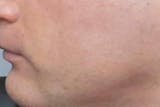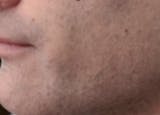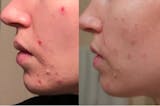Immunosuppressants reduce immune system activity, aiding in controlling inflammation in stubborn eczema.
Immunosuppressants manage the symptoms of a flare but are not a long-term eczema cure. Accompanying efforts to strengthen the skin barrier and remove triggers are recommended.
Eczema is a chronic skin condition characterized by periodic acute flares, marked by red, itchy, and inflamed skin. The severity and duration of an acute eczema flare are influenced by three main factors:
Immune system sensitivity
Trigger intensity
Skin barrier strength
Long-term eczema management rests on strengthening the skin barrier and eliminating triggers. During an acute flare though, sometimes an extreme immune reaction can create significant symptoms and sustain the flare by attacking the skin barrier even when no triggers are present.
When more conventional treatments for inflammation relief, such as topical steroids and phototherapy, fail to provide enough suppression of the immune reaction relief, immunosuppressants may offer a viable alternative.
In this article, we will explore the role of immunosuppressants in treating the immune-related symptoms of an eczema flare, how they work, and the benefits and risks associated with their use.
JUMP TO SECTION:
What Are Immunosuppressants?
Immunosuppressants are medications that reduce immune system activity, consequently reducing inflammation and symptoms related to inflammation. Examples of immunosuppressants used for eczema include cyclosporine, azathioprine, methotrexate, mycophenolate mofetil, and interferon gamma.
These medications are typically reserved for refractory (“resistant”) atopic eczema flares, a severe form of eczema flare characterized by increased levels of total serum IgE and positive skin tests to allergens such as dust mites, molds, and food.
While immunosuppressants can help manage symptoms during an acute flare, they are potentially disturbing the natural inflammatory process, and they are not a long-term cure for eczema. Their primary role is to control inflammation and provide symptomatic relief.
A weakened skin barrier, or an excess of triggers in the environment, are critical concerns that need to be addressed in tandem to any symptom relief.
Cyclosporine for Eczema
Cyclosporine is a treatment option that has proven effective for patients with atopic eczema, including those who do not respond well to conventional topical treatments.(SID 2014)(TSU 2012)
How Cyclosporine Works
Discovered in the 1970s, cyclosporine A (CSA) suppresses T cells and interleukin-2 production, which play a crucial role in the immune response. By inhibiting these cells, cyclosporine helps reduce inflammation and alleviate eczema symptoms.(SID 2014)
Benefits of Cyclosporin
Cyclosporine has been shown to significantly reduce the severity and extent of eczema symptoms. Patients treated with CSA experienced a 55% decrease in total body severity assessment (TBSA) and a 40% reduction in the rule-of-nines area assessment (RoNAA), which measures the extent of the disease.(SID 2014) In a systematic review, cyclosporine was recommended as the first-line, short-term systemic treatment for atopic eczema due to its consistent efficacy in improving clinical signs.(ROE 2013)
Risks, Drawbacks and Side Effects of Cyclosporin
Despite its benefits, cyclosporine is not without risks. Potential adverse effects include infection, nephrotoxicity, hypertension, tremor, hypertrichosis, headache, gingival hyperplasia, and increased risk of skin cancer and lymphoma. Patients receiving CSA should be closely monitored for these potential consequences, which may occur regardless of the daily dosage used.(SID 2014)
Azathioprine for Eczema
Azathioprine is another systemic agent recommended for treating refractory atopic dermatitis.(SID 2014)
How Azathioprine Works
As a purine analog, azathioprine inhibits DNA production, preferentially affecting cells with high proliferation rates like B cells and T cells during inflammatory disease states.(SID 2014)
Benefits of Azathioprine
Patients treated with azathioprine reported significant improvement in their dermatitis. After 12 weeks of treatment, the azathioprine group experienced a 37% improvement, compared to a 20% improvement with placebo.(SID 2014) In another study, azathioprine-treated patients saw a 26% reduction in their SASSAD (Six Area, Six Sign Atopic Dermatitis) score, while the placebo group only experienced a 3% reduction.(SID 2014)
Risks, Drawbacks and Side Effects of Azathioprine
While azathioprine can be beneficial, it may also cause side effects such as nausea, vomiting, bloating, anorexia, cramping, headache, hypersensitivity reactions, elevated liver enzymes, and leukopenia.(SID 2014) These side effects can lead to patient dissatisfaction and non-compliance with treatment.
Methotrexate for Eczema
Methotrexate is another systemic agent recommended for the treatment of refractory atopic dermatitis, with folate supplementation advised during treatment.(SID 2014)
How Methotrexate Works
Methotrexate is an antifolate metabolite that blocks the synthesis of DNA, RNA, and purines, negatively affecting T-cell function.(SID 2014)
Benefits of Methotrexate
Methotrexate has demonstrated efficacy in reducing eczema symptoms, with a 52% reduction in disease activity via SASSAD scoring. After 24 weeks of treatment and 12 weeks of follow-up, the mean disease activity remained 34% below baseline making Methotrexate's efficacy comparable to that of azathioprine.(SID 2014)
Risks, Drawbacks and Side Effects of Methotrexate
Methotrexate may cause nausea and other gastrointestinal symptoms, which may make oral administration challenging. Severe adverse effects, such as bone marrow suppression and pulmonary fibrosis, can occur, though bone marrow suppression is often reversible upon dose reduction or discontinuation.
Methotrexate has also been associated with an increased risk of skin cancer and lymphoma. Pulmonary fibrosis may occur with short or long-term use of the medication, making it unsuitable for patients with pulmonary diseases.
Mycophenolate Mofetil for Eczema
Mycophenolate mofetil is an alternative, variably effective therapy for refractory atopic dermatitis.(SID 2014)
How Mycophenolate Mofetil Works
Mycophenolate mofetil (MMF) is an immunosuppressant that inhibits the purine biosynthesis pathway of cells by blocking inosine monophosphate dehydrogenase. MMF selectively affects B-cells and T-cells, as other cells have purine scavenger mechanisms that compensate for this blockage, giving this medication a unique mechanism of action to treat inflammatory disorders.(SID 2014)
Benefits of Mycophenolate Mofetil
A study of 20 adult patients with moderate to severe AD treated with MMF found that 85% reported disease improvement within the first month, and 50% achieved disease clearance, allowing them to discontinue the medication.(SID 2014)
Risks, Drawbacks and Side Effects of Mycophenolate Mofetil
The initial response to MMF may be delayed, and common side effects include nausea, vomiting, and abdominal cramping. Rarely, hematologic (anemia, leukopenia, thrombocytopenia) and genitourinary (urgency, frequency, dysuria) symptoms have been reported.(SID 2014)
Interferon Gamma for Eczema
Interferon gamma is a moderately and variably effective alternative therapy for refractory AD in adults and children who have not responded to other systemic therapies or phototherapy.(SID 2014)
How Interferon Gamma Works
Interferon gamma (IFN-G) is a cytokine with a principal role in the innate and adaptive immune system cascade. It enhances natural killer cell production and increases macrophage oxidation, functioning as a biologic response modifier.
Benefits of Interferon Gamma
A study comparing 38 topic dermatitis patients receiving daily subcutaneous injections of IFN-G to 40 patients receiving placebo injections over 12 weeks found statistically significant improvements in IFN-G treated patients regarding erythema (p=0.035), excoriations and erosions (p=0.045), and conjunctivitis (p<0.002).(SID 2014)
Risks, Drawbacks and Side Effects of Interferon Gamma
Interferon gamma treatment may cause constitutional side effects such as fatigue, fever, nausea, vomiting, and myalgia.(SID 2014)
Are Immunosuppressants Right For Me?
To determine whether immunosuppressants are the right treatment option for your eczema, consult with a healthcare professional who can evaluate your specific needs and medical history. Each immunosuppressant drug has its unique benefits and risks, so it is essential to thoroughly discuss these options with your doctor before making a decision.
Long-term management of eczema should include the identification and elimination of triggers and a strengthening of the skin barrier.
Check out our articles on moisturizing, avoiding triggers, controlling your immune system through diet and stress management.
Share your experiences with us! Tell us what has and hasn’t worked for you. What did we miss in this article that you've found personally impactful? Your insights can help others better understand and manage their eczema.



